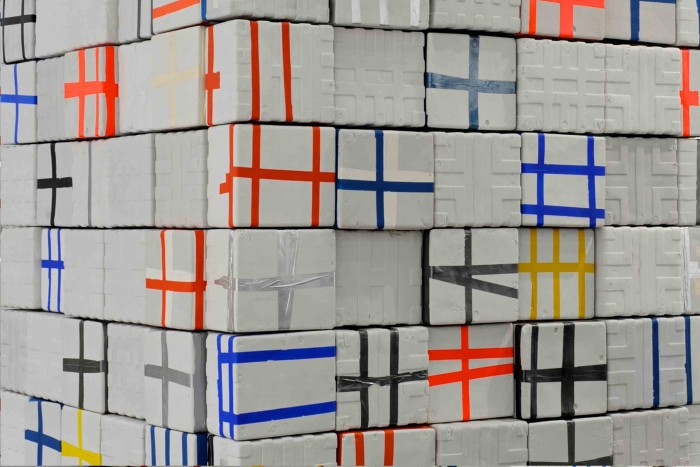
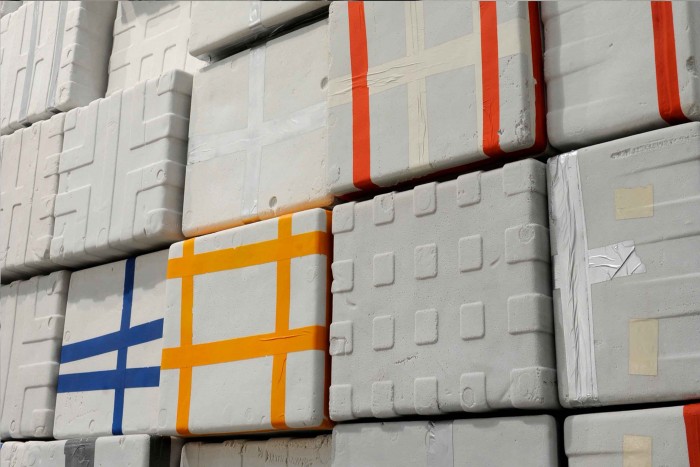
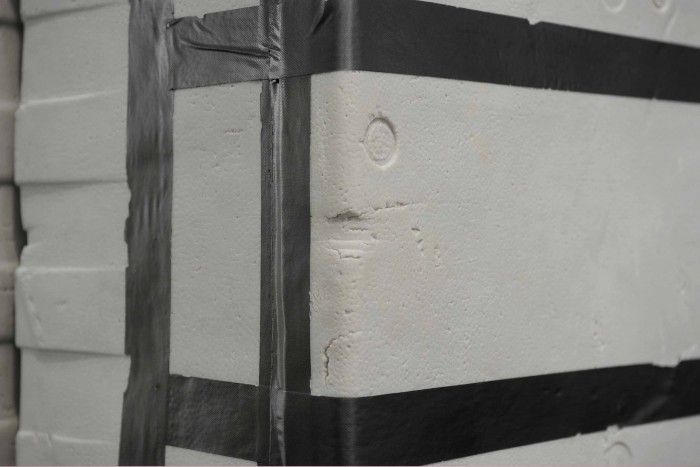
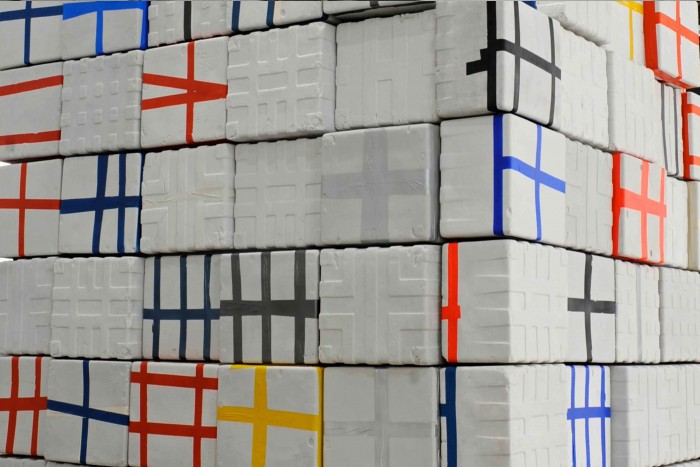
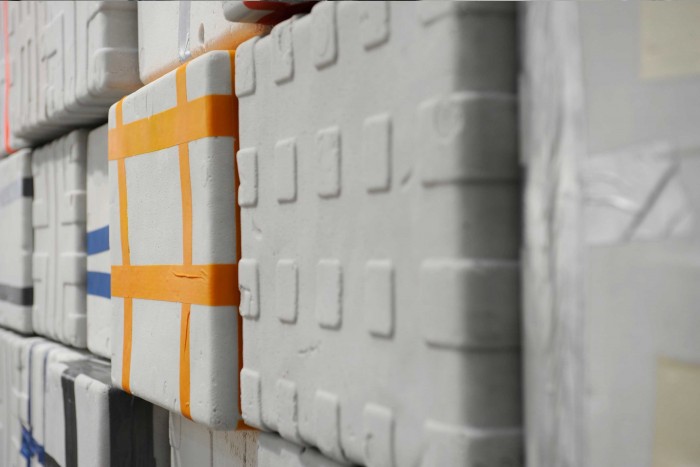
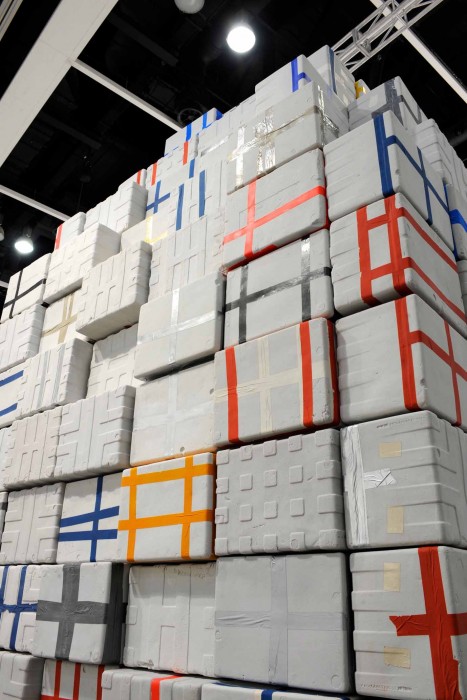

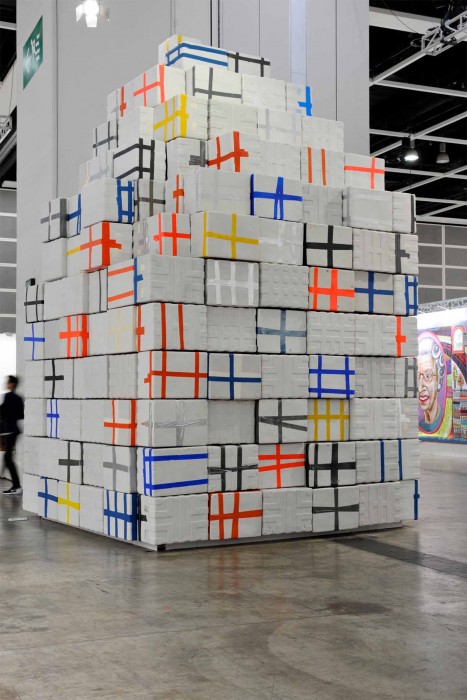
The proposed structure presents the visualisation of the contemporary mausoleum, which instead of historical blocks, has been created by the careful stacking of market place styrofoam boxes cast in stone resin. By virtue of the structure’s form, material and resonance, Paiva elevates the commonplace and extends its meaning beyond the ordinary towards the mythical. Moreover, the structure probes viewers to reflect upon the fundaments of our society, what as a civilization we will leave behind, and what to us now is sacred.
The installation builds upon Paiva’s exploration of those elements that are part of ordinary urban cityscapes, most specifically Hong Kong, the artist’s home since 2006.
The structure’s building blocks, which acutely resemble styrofoam boxes, are intrinsic to Hong Kong’s wet markets. Used to carry and store a variety of goods, from vegetables to fresh fish and meat, the purpose of these boxes is primarily to serve commercial exchanges at market stalls, while their life-span, to both the stall holders and passers-by, is not even a consideration: these objects are not worthy of contemplation - their existence is but transient. Interested in how we do not contemplate them twice, yet styrofoam ironically can take millions of years to decompose and is the cause of white pollution in China, Paiva created an impeccable cast of this object out of stone resin and recreated the tape that binds them in shades of coloured oil paint.
Stacked, one atop the other, the arrangement of boxes mimics the storing and transporting techniques used by the Hong Kong vendors; towering walls of styrofoam containers or monolithic structures, treacherously tied by a fine rope and balanced atop the back of a bike. Paiva builds this installation, however, with a further source of inspiration in mind: those mausoleums of civilizations past, from Angkor Wat in Cambodia to Giza in Egypt and Chichen Itza in the Yucatan, Mexico. By arranging these boxes, which are borderline rocks because of the materials used, into an imposing cuboidal structure, the structure mimics the austerity of these sacred constructions. Furthermore, by integrating a visible entrance in the installation, yet having it blocked off to the public viewer, Paiva references how these sites of historical and religious significance are closed down to the public, so that their myth is permeated by their imposing exterior form rather than revelation of their interior.
As such, Paiva’s installation presents a rich multi-layered allegory for what our current civilization stands upon, what it will leave behind and what it considers sacred. Markets are at the base of our existence for centuries past, whether it is a stall or the greater picture of where business or commerce is held.
What is often not looked at twice, indeed what is disregarded, is in fact an essential element in building the cityscapes and infrastructures that define our current society and will represent our times in the future. Whereas imposing structures used to be created for religious purposes or sacred leaders, imposing architectures are in present society constructed for places of commercial exchange or to exist as beacons of culture. Paiva thus prompts the viewer to reflect upon the bigger picture of what we as a contemporary society worship, while simultaneously urging the viewer to contemplate on a local more focused level what are the building blocks of our present.
structural consultants BEAU ARCHITECTS